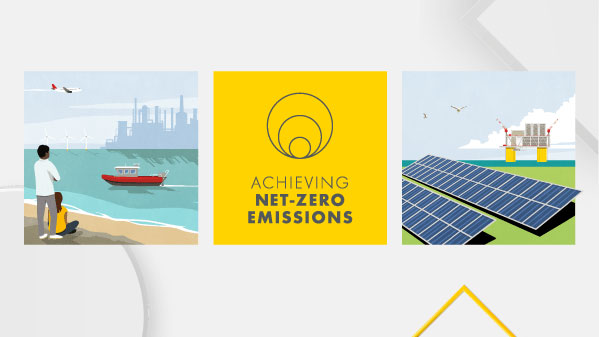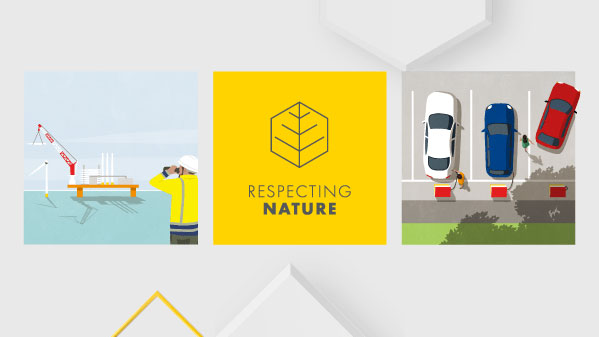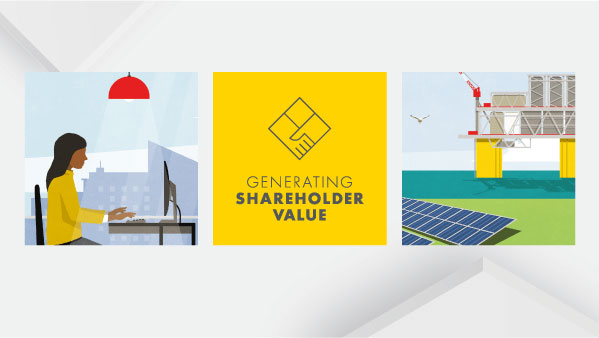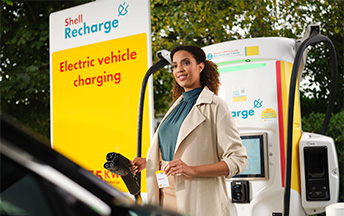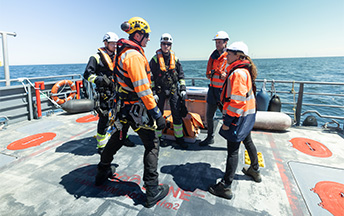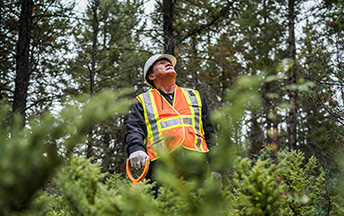About our data
We began reporting voluntarily on our environmental, safety and social performance with the first Shell Report for 1997. We support transparency and share information and data in this report and on www.shell.com.
There are inherent limitations to the accuracy of environmental, safety and social performance data. We recognise that our data will be affected by these limitations, so we continue to improve data integrity by strengthening our internal controls.
We provide all non-financial data in this report on a 100% basis for companies and joint ventures where we are the operator unless otherwise stated, in line with industry practice. We believe that the operational control boundary best reflects existing regulatory requirements, as well as internal policies, for the management of potential health, safety, environmental and social impacts.
Our Scope 1 and 2 greenhouse gas emissions are calculated using two boundaries: operational control and equity. Under the operational control boundary, we report 100% of greenhouse gas emissions from the assets that we operate, regardless of how much equity we have in those assets. Under the equity boundary, we report the greenhouse gas emissions that correspond to our proportion of equity in both operated and non-operated assets. Scope 1 and 2 greenhouse gas emissions under the equity boundary for 2022 are expected to be published later in the year as an update to this report and on our corporate website.
Operations that we acquired or divested during 2022 are included only for the period in which we operated those assets.
We refer to the number of people employed on a full- and part-time basis. This includes people working in Shell subsidiaries, Shell-operated joint ventures and those seconded to non-Shell-operated joint operations, or ventures and associates. Employee metrics exclude the employees in portfolio companies, except for the metrics reflecting total employee numbers, actual number of employees by geography, percentage of women employees, and mandatory training courses.
Other data are collected from external sources, employee surveys and other internal sources as indicated. Some data in the social performance data table come from an internal survey completed by the senior Shell representative in each country. The accuracy of environmental and social data may be lower than that of data obtained through our financial systems.
We only include data in this report for 2022 that were confirmed by the end of February 2023. If incidents are reclassified or confirmed, or if significant data changes occur after preparation of this report, they will be updated in the following year’s publication.
Assurance
We have clear standards and reporting requirements for our health, safety, security, environment and social performance (HSSE & SP) data.
Shell companies are required to adopt these standards, which define management roles and responsibilities, the scope of data at facilities and how data are calculated and collected. These standards are part of our HSSE & SP Control Framework.
To ensure we provide accurate information, our assurance process for HSSE & SP data is also a key element of the HSSE & SP Control Framework. Some examples of the assurance mechanisms in this process are:
- self-assessments at the facility level;
- internal audits at all levels of Shell;
- quarterly reviews and assessments of the data at all levels;
- an annual series of meetings between leaders at Group level and senior business managers to discuss outcomes and reporting parameters; and
- formal sign-off by Shell’s senior country leaders.
Some acquired companies in new business sectors are not yet in full compliance with the Shell Control Framework. Following specific assessments for each of these companies, dedicated projects were put in place to achieve compliance, with regular updates on progress.
The Carbon Reporting Committee, which was formed in 2021, is tasked with ensuring that greenhouse gas emission measures – absolute emissions and carbon intensity, and associated metrics – comply with all regulatory and legal requirements.
The Report Review Panel of independent experts helps ensure our reporting is balanced, relevant and responsive to stakeholder interests.
LRQA has provided limited assurance of our net carbon intensity (measured and reported using the Net Carbon Footprint methodology), Scope 1 and Scope 2 greenhouse gas emissions data under operational control for 2022, and Scope 3 greenhouse gas emissions from energy products included in our net carbon intensity. Limited assurance means nothing has come to the verifier’s attention that would indicate the greenhouse gas data and information, as presented in the Net Carbon Intensity Assertion and the Greenhouse Gas Statement/Assertion, were not materially correct. The most recent assurance statements are available at www.shell.com/ghg.
Conversions into US and Canadian dollars are based on the average exchange rates for 2022.


